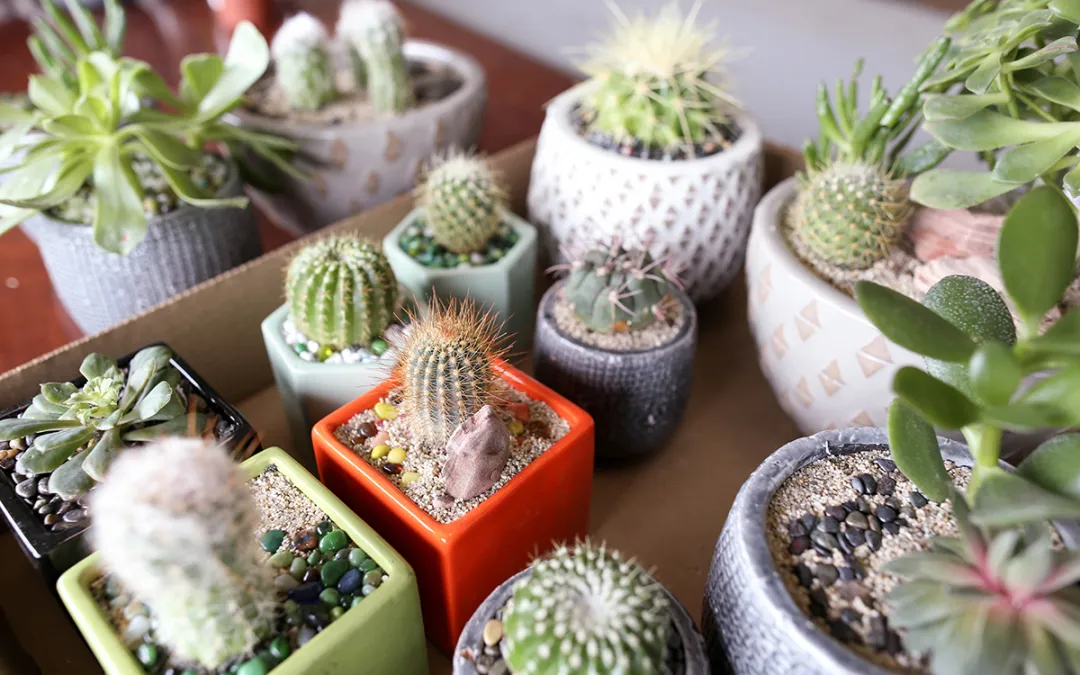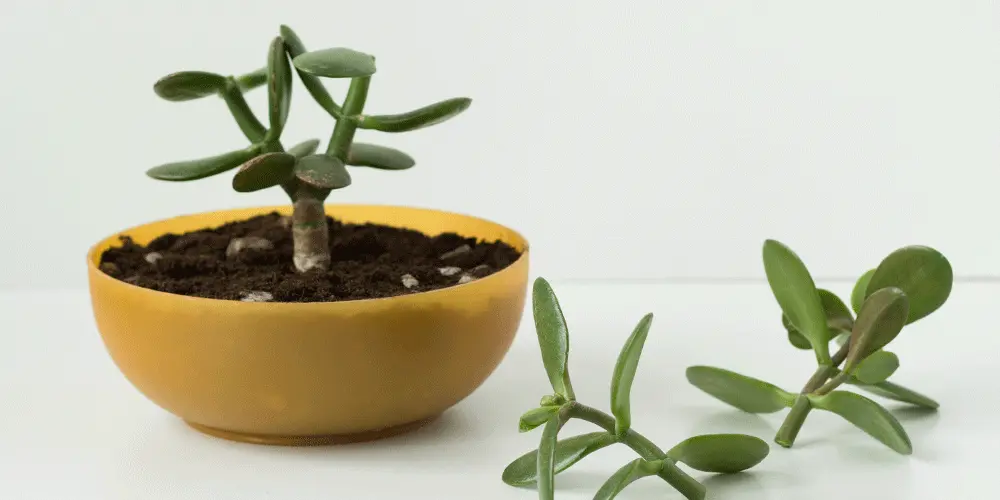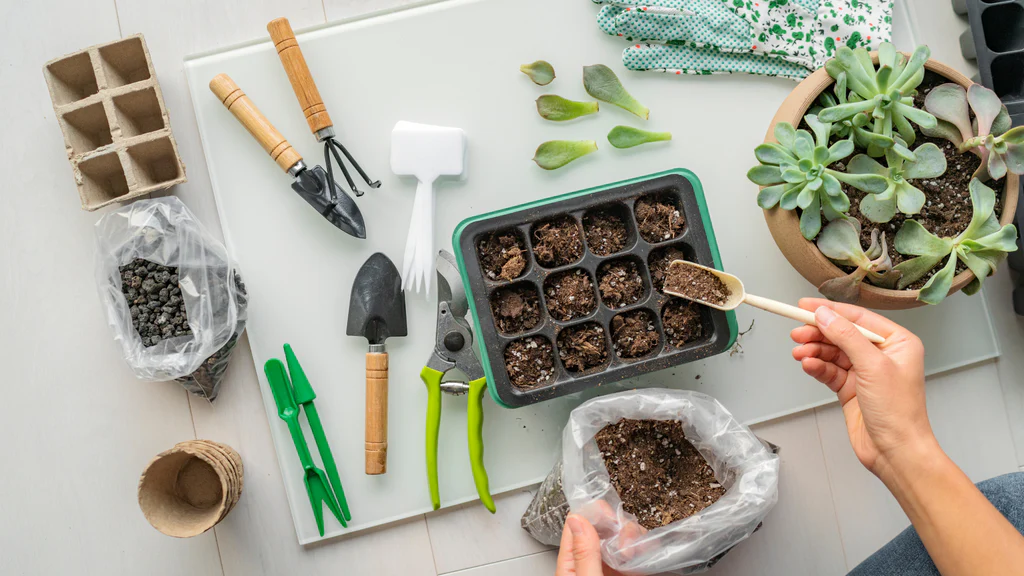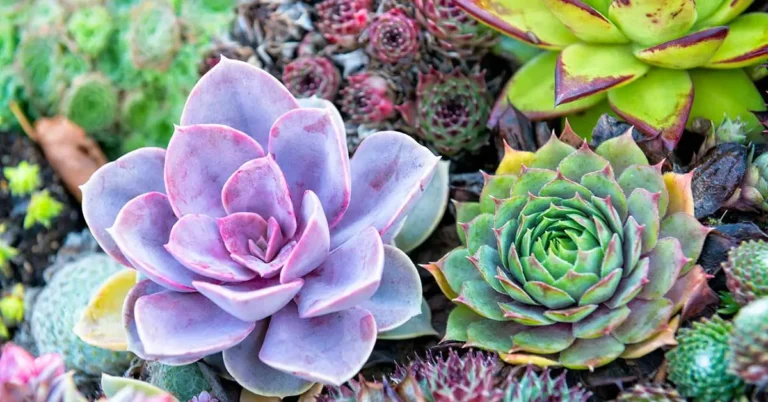Contents
Introduction
Have you ever wondered how to grow more of those charming succulents and quirky cacti you adore, right from your apartment? Propagating succulents and cacti is a fantastic way to expand your indoor garden without spending a fortune. Whether you’re looking to fill a few empty spots or share your plant love with friends, understanding the basics of plant propagation can be incredibly rewarding.
So, what exactly is propagation? In simple terms, it’s the process of creating new plants from existing ones. It’s like taking a cutting from a plant and giving it a new home where it can grow into a full-fledged, beautiful plant. Think of it as a way to clone your favorite plants, allowing you to enjoy more of what you love, and even gift them to others.
Why should you consider propagating your succulents and cacti? First off, it’s super cost-effective. Instead of buying new plants, you can use the ones you already have to grow new ones. Plus, it’s a fun and satisfying hobby that lets you connect with your plants in a whole new way. Not only does it help you create a more vibrant indoor garden, but it also ensures that your existing plants stay healthy and vigorous.
In this guide, we’ll walk you through everything you need to know about propagating succulents and cacti in your apartment. We’ll cover various methods, from the simple leaf and stem cuttings to the more advanced seed propagation. You don’t need to be a gardening expert to get started; just a bit of curiosity and a love for plants will do the trick. So, roll up your sleeves, grab a few pots, and get ready to dive into the world of succulent and cactus propagation!
Understanding Succulents and Cacti
Before diving into the world of propagation, it helps to get to know the plants you’ll be working with: succulents and cacti. These unique plants are not just trendy decor pieces; they’re fascinating and resilient, making them perfect for indoor gardening.

So, what exactly are succulents and cacti? While they often get lumped together, they have some distinct differences. Succulents are a broad group of plants that store water in their leaves, stems, or roots, which is why they can survive in dry conditions. They come in all shapes and sizes, from the rosette-formed Echeverias to the trailing String of Pearls. Cacti, on the other hand, are a specific type of succulent that belongs to the Cactaceae family. They’re known for their unique spines or glochids instead of leaves, and many feature stunning flowers that can really brighten up a space.
Now, let’s talk about their basic care needs. Both succulents and cacti thrive in bright light. If you’ve got a sunny windowsill, you’re in luck! They also love well-draining soil to prevent root rot, so a cactus or succulent mix is ideal. When it comes to watering, less is more. These plants are designed to store water, so they don’t need frequent watering like other houseplants. Just wait until the soil is completely dry before giving them a drink. Overwatering is a common mistake, so it’s better to err on the side of too little rather than too much.
Understanding these basics will not only help you take better care of your plants but also give you a solid foundation for successful propagation. With the right knowledge, you’ll be well on your way to growing a thriving collection of succulents and cacti right in your apartment.
Propagation Methods
Ready to dive into propagating your succulents and cacti? There are several easy and effective methods you can use to grow new plants from your existing ones. Each method has its own charm and works best for different types of succulents and cacti. Let’s break down the most popular techniques so you can find the one that’s right for you.
Leaf Cuttings
One of the most straightforward ways to propagate succulents is through leaf cuttings. This method works well with many types of succulents and is a fantastic starting point for beginners. Here’s how it works:

- Selecting Healthy Leaves: Choose plump, healthy leaves from your succulent. Avoid any that are damaged or dried out.
- Removing the Leaf: Gently twist the leaf from the stem, making sure to get a clean break. If the leaf breaks in half, it won’t propagate, so be careful!
- Allowing to Callus: Let the leaf sit in a dry place for a few days until the cut end forms a callus. This helps prevent rot when you plant it.
- Planting the Leaf: Place the callused leaf on top of some well-draining soil. No need to bury it; just let it rest on the surface. Water it lightly and keep it in a bright spot. Soon, tiny roots and a new plant will start to grow.
Stem Cuttings
Stem cuttings are another popular method, especially for cacti and some succulents. This method involves taking a segment of the plant’s stem and encouraging it to grow roots:
- Choosing the Right Stem: Look for a healthy, firm stem. Make sure it’s not too young or too old. A mature, healthy stem will have the best chance of rooting.
- Cutting Techniques: Use clean, sharp scissors or a knife to cut the stem. Make the cut just below a node (the part of the stem where leaves attach).
- Callusing: Let the cut end of the stem dry out and form a callus. This usually takes a few days.
- Planting the Cutting: Once callused, place the stem in well-draining soil. Water sparingly and keep it in a warm, bright spot. With a bit of patience, you’ll see new growth emerging from the cut end.
Offsets and Pups
Offsets and pups are natural offshoots that many succulents and cacti produce. They’re like mini versions of the parent plant and are ready to be separated and grown on their own:
- Identifying Offsets/Pups: Look for small, baby plants growing around the base of your main plant. These are the offsets or pups.
- Removing and Separating: Gently twist or cut the offsets away from the parent plant. Be careful not to damage the roots.
- Planting and Care: Plant the offsets in their own pots with well-draining soil. Water them lightly and place them in bright light. They’ll quickly establish themselves as new plants.
Seed Propagation
For those who are up for a bit of a challenge, seed propagation is a method that can be incredibly rewarding, though it requires more patience:
- Choosing and Sowing Seeds: Purchase seeds or collect them from your existing plants. Sow them on the surface of a well-draining seed mix. Don’t bury them; they need light to germinate.
- Creating a Suitable Environment: Keep the seeds in a warm, sunny spot. Maintain high humidity by covering the pot with a plastic dome or wrap.
- Caring for Seedlings: Once the seeds sprout, remove the cover and continue to care for them by providing adequate light and keeping the soil moist but not soggy. Transplant the seedlings once they’re big enough to handle.
Each propagation method has its own set of steps and requirements, but don’t worry—you don’t need to master them all at once. Start with one or two methods and see how they work for you. Happy propagating!
Tools and Materials
To make propagation a breeze, having the right tools and materials on hand is essential. You don’t need a lot of fancy equipment—just a few basic items will do the trick. Here’s a rundown of what you’ll need to get started:

Essential Tools
- Scissors or Pruning Shears: A pair of sharp, clean scissors or pruning shears is crucial for making precise cuts. This helps ensure you’re taking clean, healthy cuttings without damaging the plant.
- Tweezers: For handling small cuttings or seeds, tweezers can be incredibly helpful. They allow you to maneuver tiny pieces with ease, especially when dealing with delicate seedlings.
- Small Pots or Containers: You’ll need pots or containers to plant your cuttings, offsets, or seeds. Small pots with drainage holes are ideal to prevent overwatering and root rot.
- Watering Can or Spray Bottle: A gentle watering can or spray bottle is perfect for keeping the soil moist without soaking it. This is especially important for new cuttings and seedlings.
- Spoon or Trowel: For transferring soil into pots or digging small holes for seeds, a small spoon or trowel can be handy.
Recommended Materials
- Well-Draining Soil: Succulents and cacti thrive in soil that allows excess water to drain away quickly. Look for a pre-mixed cactus or succulent soil, or create your own mix by combining regular potting soil with perlite or sand.
- Potting Mix for Seeds: If you’re starting from seeds, a finer, seed-starting mix is ideal. It helps with seed germination and provides a good environment for young seedlings.
- Propagation Tray: If you’re doing multiple propagations at once, a propagation tray with multiple sections can help you keep everything organized. It’s also great for starting seeds.
- Plastic Domes or Wrap: For seed propagation, covering your containers with a plastic dome or wrap helps create a humid environment, which is essential for seed germination.
Additional Supplies
- Labeling Tags: If you’re propagating several types of plants, labeling tags can help you keep track of what you’re growing. Simple plastic or wooden tags will work, or you can even use popsicle sticks.
- Rooting Hormone (Optional): While not strictly necessary, rooting hormone can encourage faster root development in cuttings. It’s a good option if you want to give your cuttings an extra boost.
With these tools and materials at your disposal, you’ll be well-equipped to handle any propagation project. Having everything organized and ready will make the process smoother and more enjoyable, helping you create a thriving indoor garden in no time.
Common Problems and Solutions
Propagation can be a fun and rewarding experience, but it’s not without its challenges. If you’re new to propagating succulents and cacti, you might run into a few bumps along the way. Don’t worry—most issues have simple solutions. Here’s a guide to help you troubleshoot some common problems and keep your plants healthy and thriving.
Root Rot
Root rot is a sneaky problem that can occur when plants sit in soggy soil for too long. This is especially common if you overwater your succulents or cacti.
- Symptoms: Wilting leaves, a mushy or discolored base, and a foul smell coming from the soil.
- Causes: Overwatering, poor drainage, or using soil that retains too much moisture.
- Prevention and Solution: Make sure your pots have drainage holes and use well-draining soil. If you notice root rot, remove the affected plant from its pot, trim away the rotten roots, and repot it in fresh soil. Be sure to let the plant dry out before watering again.
Pest Issues
Pests like mealybugs, spider mites, and aphids can be a nuisance, particularly if they’re not spotted early.
- Symptoms: White, cottony patches (mealybugs), fine webbing (spider mites), or distorted leaves (aphids).
- Causes: Infestation often occurs when plants are too close together or if they’re stressed from improper care.
- Prevention and Solution: Regularly inspect your plants for pests. You can wipe down affected areas with a cotton swab dipped in alcohol or spray the plant with insecticidal soap. For severe infestations, consider using a stronger pesticide, but always follow the instructions carefully.
Environmental Factors
Succulents and cacti are quite adaptable, but extreme changes in their environment can cause problems.
- Symptoms: Sunburn (brown or faded spots), leggy growth (stretched stems), or stunted growth.
- Causes: Too much direct sunlight, inadequate light, or temperature fluctuations.
- Prevention and Solution: Ensure your plants are getting the right amount of light. Most succulents and cacti prefer bright, indirect light. If your plants are getting too much direct sunlight, move them to a spot with filtered light or provide some shade. For temperature issues, keep your plants in a stable environment with temperatures that don’t drop too low or soar too high.
By keeping an eye out for these common problems and addressing them promptly, you’ll set yourself up for a successful propagation journey. Remember, a bit of troubleshooting is part of the fun and learning process. With a little patience and care, your plants will reward you with healthy growth and vibrant new additions to your indoor garden.
Post-Propagation Care
Once you’ve successfully propagated your succulents and cacti, it’s time to focus on nurturing them as they grow. Proper post-propagation care is crucial to ensure your new plants establish themselves and thrive. Here’s a simple guide to help you through the next stages of their development.
Transplanting
As your propagated plants start to grow, they may outgrow their initial pots or containers. This is when it’s time to consider transplanting them into larger pots.
- When to Transplant: Look for signs that your plant is ready to be moved, such as roots growing through the drainage holes or the plant becoming top-heavy. Generally, transplanting is needed once the plant has developed a strong root system and is starting to outgrow its current space.
- How to Transplant: Gently remove the plant from its pot, taking care not to damage the roots. Place it in a slightly larger pot filled with fresh, well-draining soil. Make sure the plant is at the same depth it was in its original pot. Water lightly and place it in a bright, indirect light location to help it adjust.
Long-Term Care
With your plants settled into their new pots, ongoing care will help them continue to grow healthy and strong.
- Watering: Succulents and cacti are drought-tolerant and prefer to dry out between waterings. Water your plants thoroughly, then let the soil dry completely before watering again. Overwatering can lead to root rot, so always err on the side of less rather than more.
- Fertilization: Feed your plants with a balanced, diluted fertilizer during their growing season (usually spring and summer). Too much fertilizer can harm your plants, so use it sparingly and follow the instructions on the product.
- Light: Ensure your plants get adequate light. Most succulents and cacti thrive in bright, indirect light. If natural light is limited, consider using grow lights to supplement their needs.
- Cleaning: Keep your plants clean by gently wiping dust off the leaves with a soft cloth or brush. This helps them stay healthy and photosynthesize more effectively.
By following these post-propagation care tips, you’ll set your new plants up for a long, healthy life. With a little attention and care, your succulents and cacti will continue to grow and bring beauty to your indoor space. Enjoy watching your propagation efforts bloom into a thriving collection of plants!
Conclusion
Congratulations! You’re now equipped with all the knowledge you need to start propagating succulents and cacti in your apartment. Whether you’re expanding your own plant collection or sharing the green love with friends, propagation is a rewarding and enjoyable process.
To recap, propagation allows you to create new plants from existing ones using several methods—leaf cuttings, stem cuttings, offsets, pups, and seeds. Each technique has its unique approach and benefits, making it easy to find one that fits your needs and preferences. Remember, the key to successful propagation is patience and care, from selecting healthy plant parts to providing the right environment for growth.
As you embark on your propagation journey, don’t be afraid to experiment and make mistakes. Every plant is different, and learning from each experience will help you refine your skills and improve your results. With a bit of practice, you’ll soon become a pro at growing new succulents and cacti from scratch.
Enjoy the process and have fun watching your new plants grow and thrive. Each new addition to your collection is a testament to your green thumb and dedication. So, roll up your sleeves, get your hands dirty, and embrace the joy of nurturing your plants from start to finish. Happy propagating!



